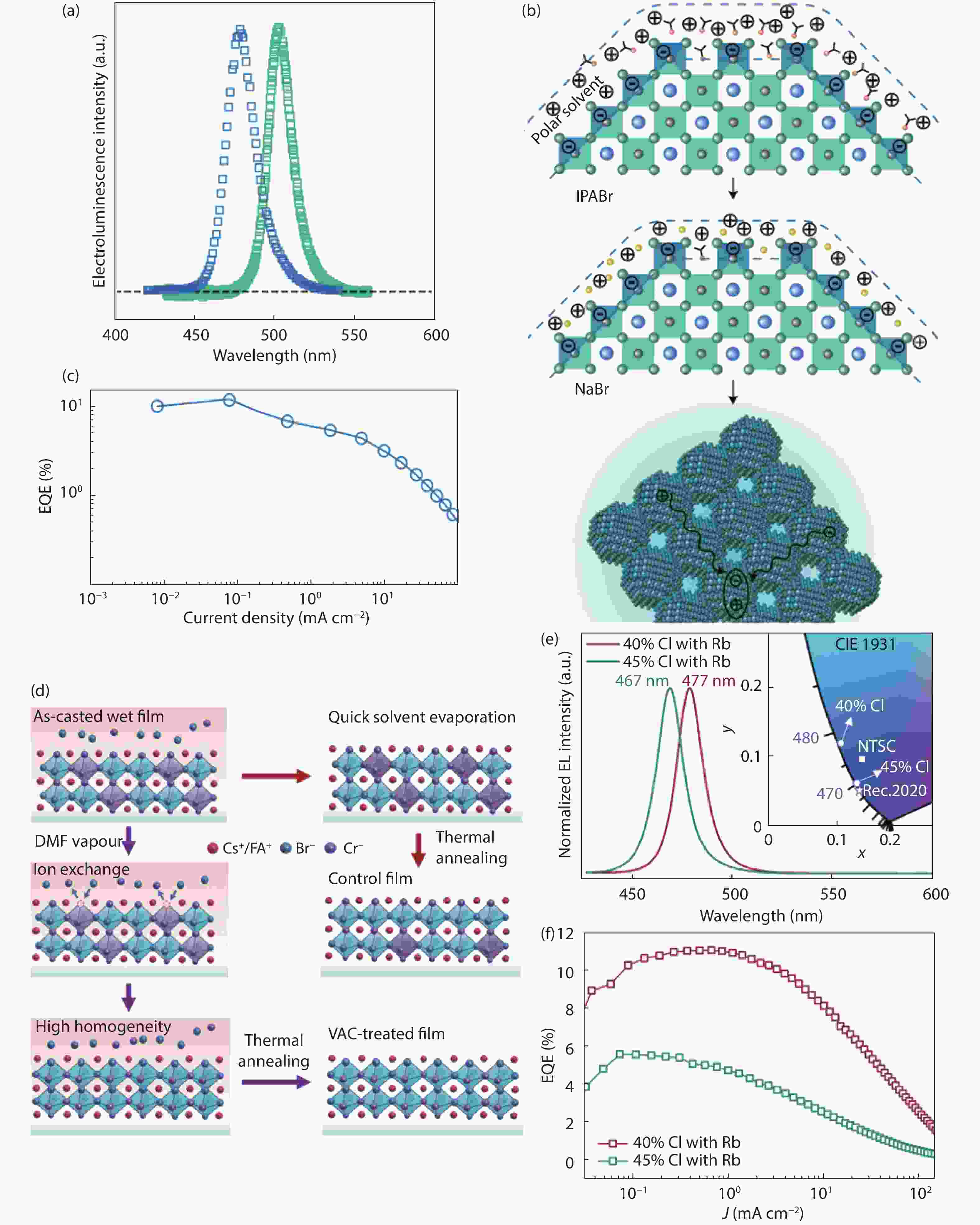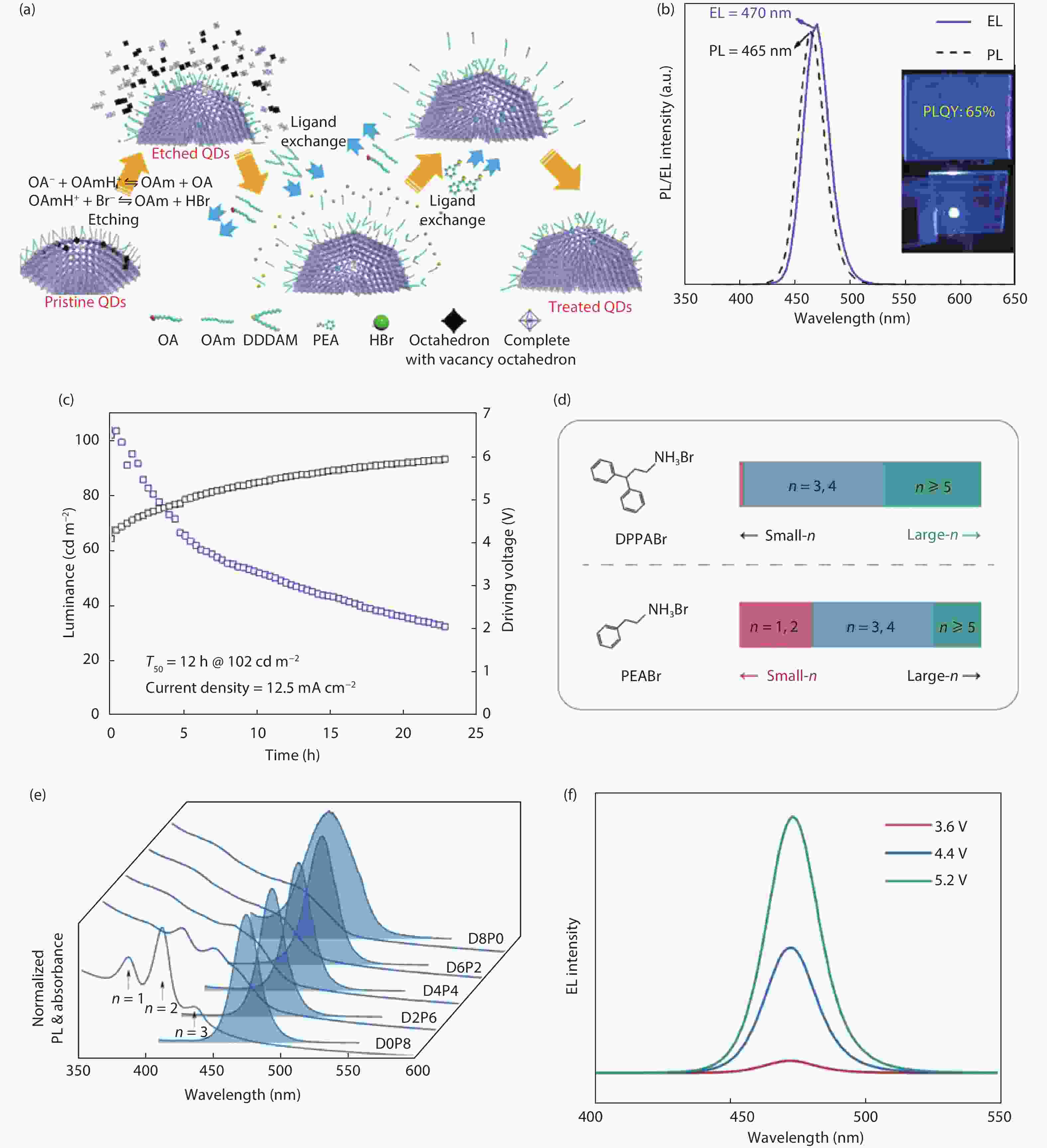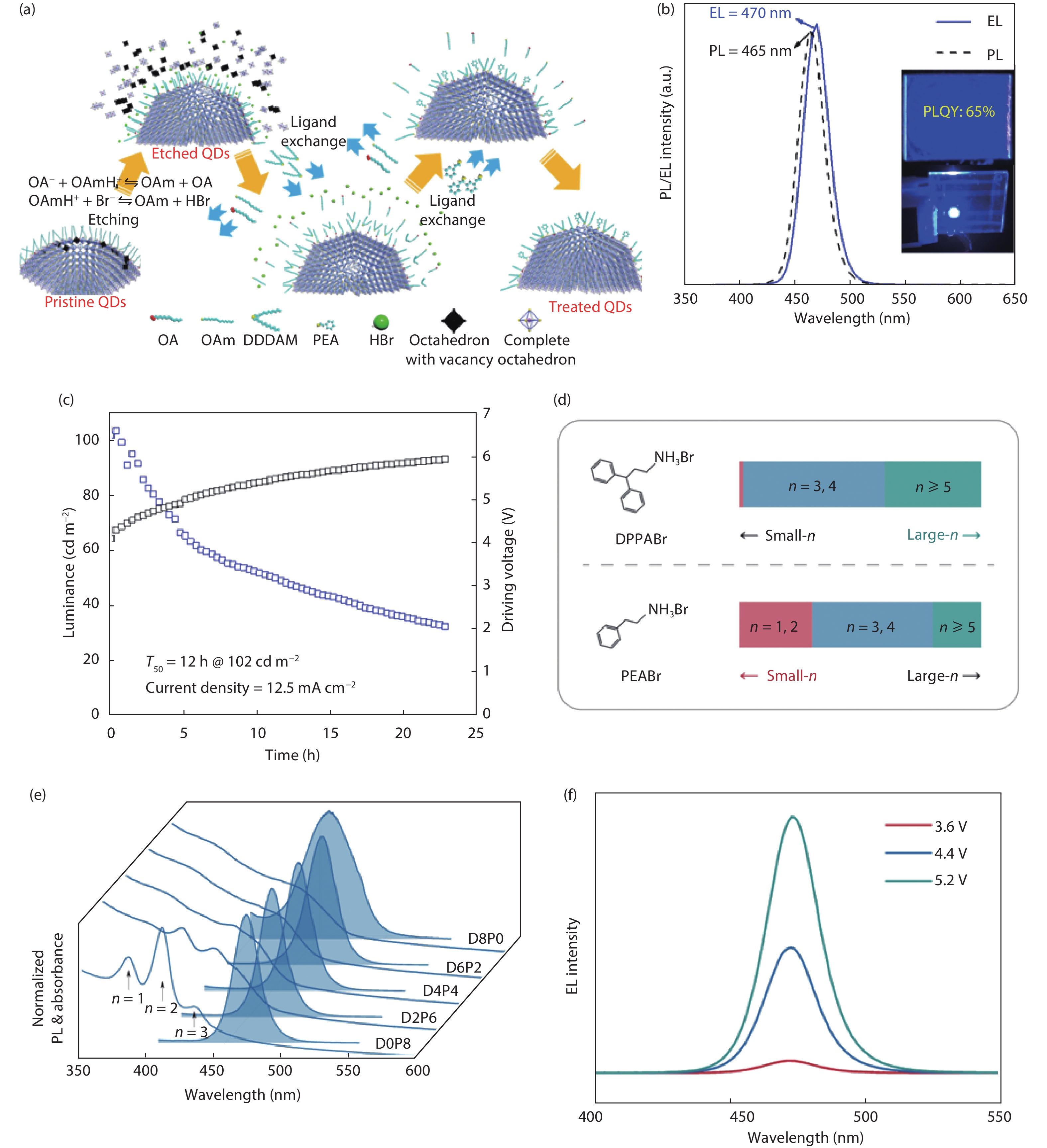| Citation: |
Mengqi Zhang, Chuantian Zuo, Jianjun Tian, Liming Ding. Blue perovskite LEDs[J]. Journal of Semiconductors, 2021, 42(7): 070201. doi: 10.1088/1674-4926/42/7/070201
M Q Zhang, C T Zuo, J J Tian, L M Ding, Blue perovskite LEDs[J]. J. Semicond., 2021, 42(7): 070201. doi: 10.1088/1674-4926/42/7/070201.
Export: BibTex EndNote
|
-
References
[1] Kovalenko M V, Protesescu L, Bodnarchuk M I. Properties and potential optoelectronic applications of lead halide perovskite nanocrystals. Science, 2017, 358, 745 doi: 10.1126/science.aam7093[2] Xu W D, Hu Q, Bai S, et al. Rational molecular passivation for high-performance perovskite light-emitting diodes. Nat Photonics, 2019, 13, 418 doi: 10.1038/s41566-019-0390-x[3] Kim Y H, Kim S J, Kakekhani A, et al. Comprehensive defect suppression in perovskite nanocrystals for high-efficiency light-emitting diodes. Nat Photonics, 2021, 15, 148 doi: 10.1038/s41566-020-00732-4[4] Liu A Q, Bi C H, Guo R Q, et al. Electroluminescence principle and performance improvement of metal halide perovskite light-emitting diodes. Adv Optical Mater, 2021, 9, 2002167 doi: 10.1002/adom.202002167[5] Bi C H, Hu J C, Yao Z W, et al. Self-assembled perovskite nanowire clusters for high luminance red light-emitting diodes. Adv Funct Mater, 2020, 30, 2005990 doi: 10.1002/adfm.202005990[6] Dong Y T, Wang Y K, Yuan F L, et al. Bipolar-shell resurfacing for blue LEDs based on strongly confined perovskite quantum dots. Nat Nanotechnol, 2020, 15, 668 doi: 10.1038/s41565-020-0714-5[7] Chu Z M, Zhao Y, Ma F, et al. Large cation ethylammonium incorporated perovskite for efficient and spectra stable blue light-emitting diodes. Nat Commun, 2020, 11, 4165 doi: 10.1038/s41467-020-17943-6[8] Karlsson M, Yi Z Y, Reichert S, et al. Mixed halide perovskites for spectrally stable and high-efficiency blue light-emitting diodes. Nat Commun, 2021, 12, 361 doi: 10.1038/s41467-020-20582-6[9] Zheng X P, Yuan S, Liu J K, et al. Chlorine vacancy passivation in mixed halide perovskite quantum dots by organic pseudohalides enables efficient Rec. 2020 blue light-emitting diodes. ACS Energy Lett, 2020, 5, 793 doi: 10.1021/acsenergylett.0c00057[10] Bi C H, Yao Z W, Sun X J, et al. Perovskite quantum dots with ultralow trap density by acid etching-driven ligand exchange for high luminance and stable pure-blue light-emitting diodes. Adv Mater, 2021, 33, 2006722 doi: 10.1002/adma.202006722[11] Wang C H, Han D B, Wang J H, et al. Dimension control of in situ fabricated CsPbClBr2 nanocrystal films toward efficient blue light-emitting diodes. Nat Commun, 2020, 11, 6428 doi: 10.1038/s41467-020-20163-7[12] Jiang Y Z, Cui M H, Li S S, et al. Reducing the impact of Auger recombination in quasi-2D perovskite light-emitting diodes. Nat Commun, 2021, 12, 336 doi: 10.1038/s41467-020-20555-9 -
Proportional views






 DownLoad:
DownLoad:
















